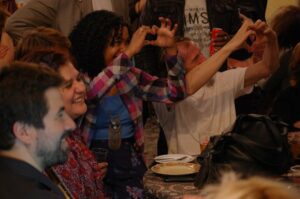Are you visiting Lisbon in this beautiful season and do you want to go beyond the obvious tourist attractions and experience the local culture through the eyes of a local?
Lisbon is a place where history, culture, and art are intertwined to create a unique and vibrant atmosphere. Springtime in Lisbon is particularly beautiful, with the city bursting into life as the warmer weather arrives. The city offers a wealth of opportunities for exploring the art and culture scene.
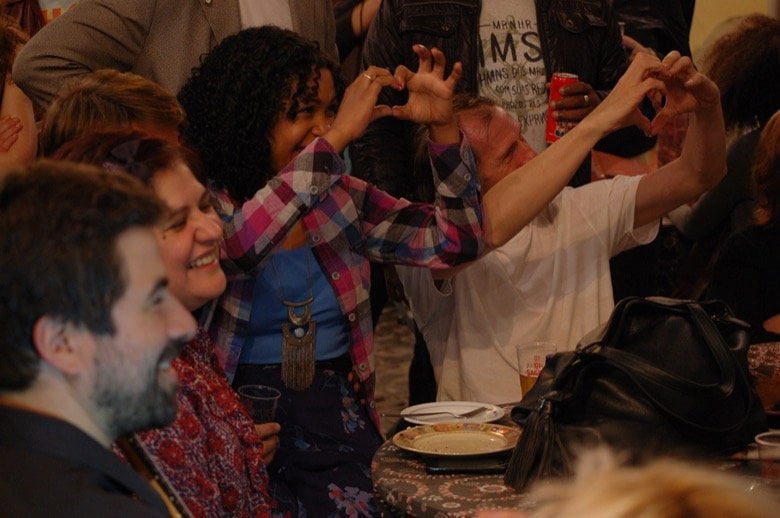
To help you get the most out of your trip, our local Spotters at Spotted by Locals, who know the city inside out, shared their tips on the best places to visit, and the hidden gems you won’t find in the guidebooks. So, whether you’re an art lover, a culture vulture, or someone who loves to explore new places, these tips will surely inspire you to discover the vibrant art and culture scene in Lisbon this spring!
Estufa Fria – Jungle in the city!
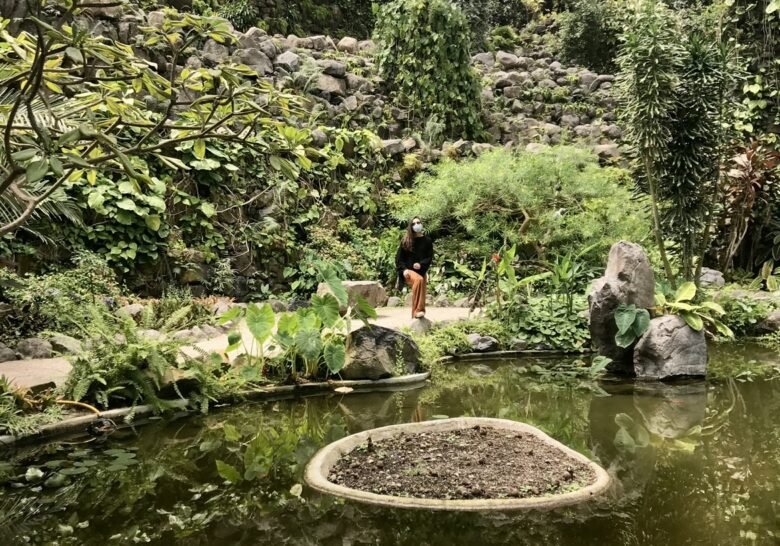
Carol Boldrini: This place is a botanical garden in a huge greenhouse located at Parque Eduardo VII. Although the name is “Estufa Fria” (= cold greenhouse), they actually have 3 spaces: the biggest cold greenhouse, the hot greenhouse and the “sweet” greenhouse.
It is full of plants – from the most ordinary to the most exotics ones – and is a very cool place to walk around, relax and see beautiful things. They have a couple of ponds, sculptures and nice small trails to follow. It is really a place to breathe in fresh air in the middle of the city.
In the summer, you may also find concerts and events there and the vibe is pretty cool. Imagine going to a jazz concert in a completely green and peaceful place – amazing.
Escadinhas de São Cristóvão – Graffiti tribute
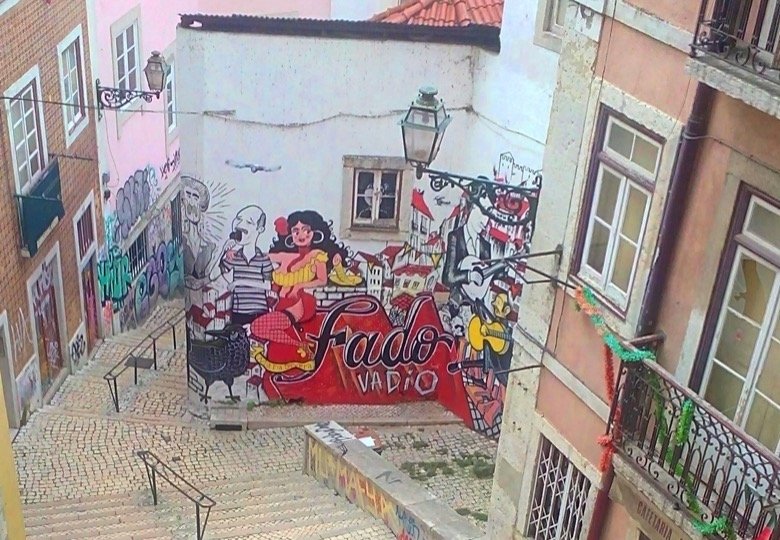
Alexandre Cotovio: An ode to the neighbourhood where this piece of art was made and to the Portuguese best known song, the Fado, born in this same neighbourhood.
Located near one of the endless number of little stairs scattered all over Lisbon, this wall was created by several artists to celebrate all things that make the identity of this neighbourhood: the old ladies chatting at their doors, the guy with a glass of wine, the church of São Cristóvão’s priest, the saint itself – Saint Christopher (São Cristóvão in Portuguese), the inspiring river siren, the fadistas (fado singers), the musicians, the most respected fadista of the neighborhood – Fernando Maurício and the famous Severa, the first fadista ever – as the legend tells.
Casa do Alentejo – Restaurant, palace & tradition
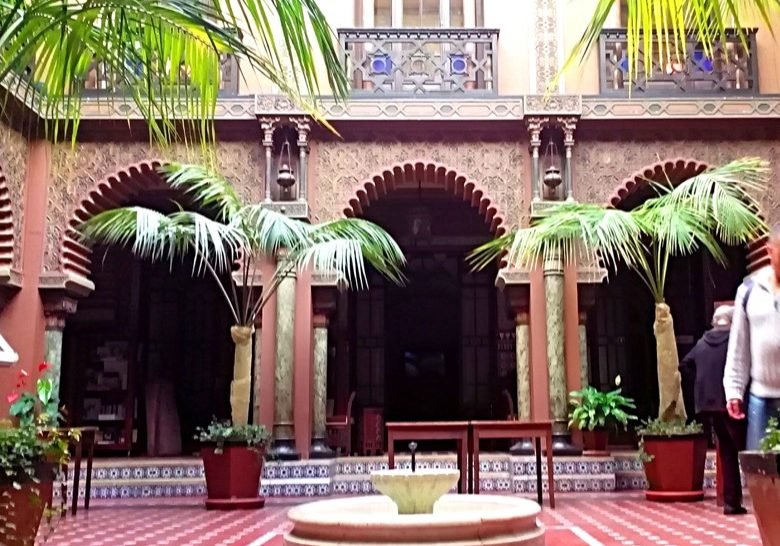
Alexandre Cotovio: Casa do Alentejo or, in English, House of Alentejo is a place dedicated to a Portuguese region known for its wines, plains, cork and quite hot summers. Alentejo literally means “além” (beyond) Tejo (Tagus River).
I had no idea what I was going to see before going inside; I’ve passed by this building several times ignoring the amazing things inside. Until the day I finally walked in.
Not going into the history of the building itself as that would require another full post, the minute I stepped inside the first time I was amazed. The first impact is the architecture; the entrance is through a staircase directly to the interior courtyard, Moorish style. I realized I was inside a palace! Another staircase to the upper floor leads to where you can find the restaurant and the incredible immense ballrooms with paintings on the walls and ceilings. I have to admit it impressed me.
Largo do Carmo – Square in downtown
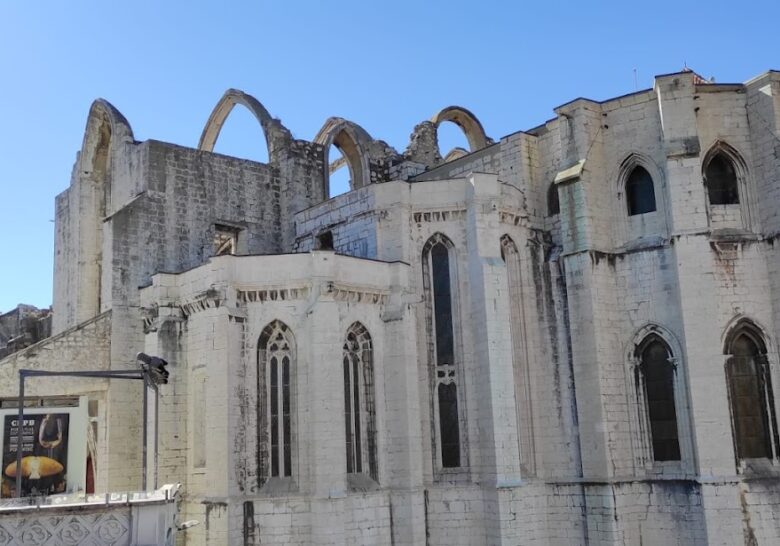
Sara Calheiros: Largo do Carmo is a very charismatic square in downtown Lisbon.
Once you climb one of Lisbon’s hills, you’ll reach a place whose distinct elements tell you many stories that you can listen to for hours. Back in 1755, the convent that it harbored became a beautiful ruin, currently used for cultural purposes and never completely rebuilt. At the center of the square, a modern fountain shows you how the whole city was rebuilt after that tragedy.
Years later, Largo do Carmo, most specifically the military quarter it hosts, took an active part in the magnificent history of Portuguese democracy: the Carnation Revolution, on April 25th, 1974. Here, the Prime Minister of the dictatorial government capitulated.
Besides its historical legacy, the Largo do Carmo is an intersection and departure point for several other spots in Lisbon, such as Rossio, Chiado, Miradouro S. Pedro de Alcântara (one of many viewpoints) and even many places where you can eat some local dishes or just enjoy a drink.
727 Bus – A journey through the real Lisbon
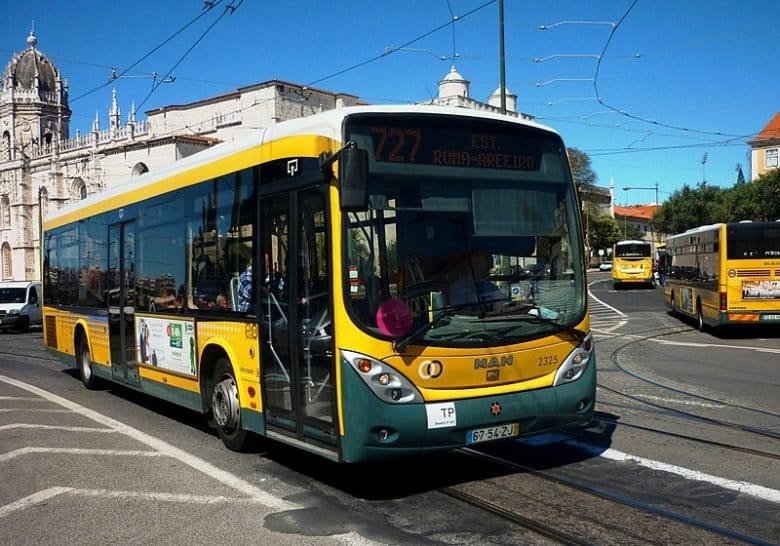
Nuno Lopes De Paula: I hate hop-on hop-off buses: they’re crowded, overpriced… they make no sense if you want to see the real side of a city while avoiding overtourism. That being said, let me take you on a nice, affordable and relaxing ride in my old favourite bus, the old 727.
I started using this bus back in the ’90s. Buses were slow, they got stuck in the traffic and they took too long. 30 years later, it’s good to see that they haven’t changed a thing. This is a (very) long journey that connects 2 of my favourite neighbourhoods: Alvalade and Restelo (Belem area). I would take this bus every Friday for years, making the trip from my maternal grandma’s to my paternal grandparents, where I would spend the weekend.
It’s a very long trip, but totally worth it, as it will show you the real city. Starting at Alvalade (Roma Avenue) it will go down to the heart of town passing some iconic buildings like the Campo Pequeno Bullring, Picoas and Saldanha neighbourhoods (the so-called “Avenidas Novas” or “The New Avenues”), Marques de Pombal, Rato, the beautiful São Bento Street and the Parliament Building, up through the rich Lapa neighbourhood and down by the river passing in Santos, Alcântara (Lx Factory) before reaching Belem and Restelo.
Livraria Ler Devagar – Industrial bookstore
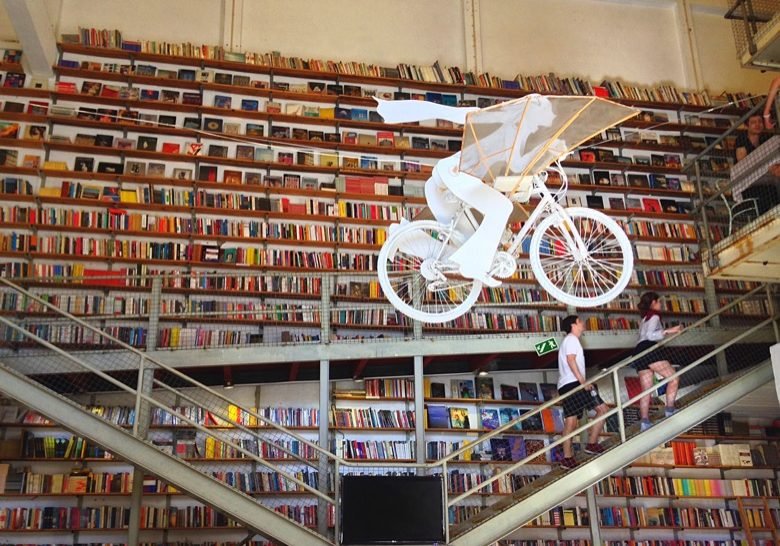
Nuno Lopes De Paula: Inside a giant factory that was once abandoned – for too long, the LX Factory has everything to give you an alternative perspective of Lisbon. This part of the city that once was a place of old warehouses and factories, located in one of the worst and ugly areas of Lisbon – literally under the bridge, is now a welcoming space, packed with digital nomads and startups.
This bookstore with 40000 books was originally founded in Bairro Alto in 1999. For me it’s one of my favourite and the perfect place to quietly read a book over a cup of coffee or a cold beer, while hearing a piano recital or even making time for a next door art exhibition.
What I love here, is to see the magnificent mechanical structures that decorate the whole building, it’s strangely comfy and welcoming. One can sit down for hours just reading a nice book or relaxing for a bit while admiring the strange industrial interiors.
Jardins da Gulbenkian – Modern & relaxing
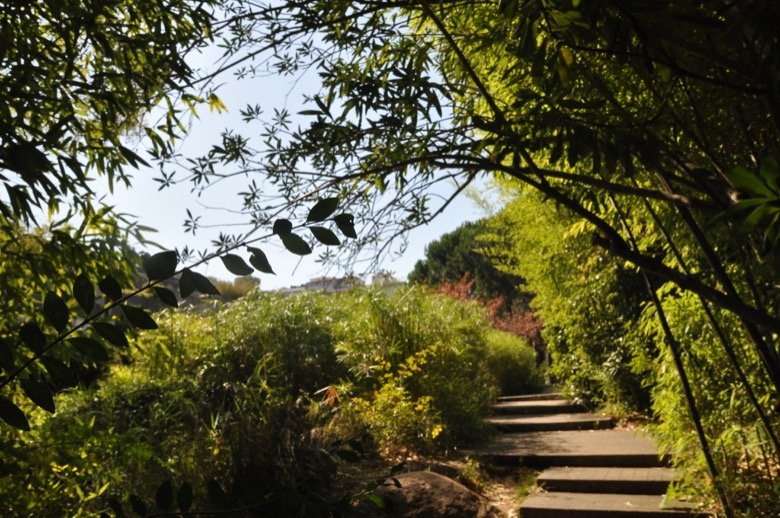
Nuno Lopes De Paula: Lisbon grew in the 50s and a new residential neighborhood was born in a flat area near Campo Pequeno. A modern green park was also added to the “Avenidas Novas” area (literally meaning new avenues): Gulbenkian Garden. The park was created in 1969, with an area of 7.5 hectares designed by the landscape architect Gonçalo Ribeiro Telles. It’s part of the Calouste Gulbenkian Foundation, Gulbenkian Museum and the José de Azeredo Perdigão Modern Art Centre, making it a cultural landmark.
There are two lakes built in the garden, the larger lake, located in the centre of the park is perfect for relaxing and taking a break from the city. There is a great coffee shop at the park.
The garden also has an open-air amphitheater. Check their agenda! With a bit of luck, you might step into any of the amazing free events ranging from dance to music. Every year during the first two weeks of August there’s a Jazz festival held in the gardens!
Aguas Livres Aqueduct – Walking into history
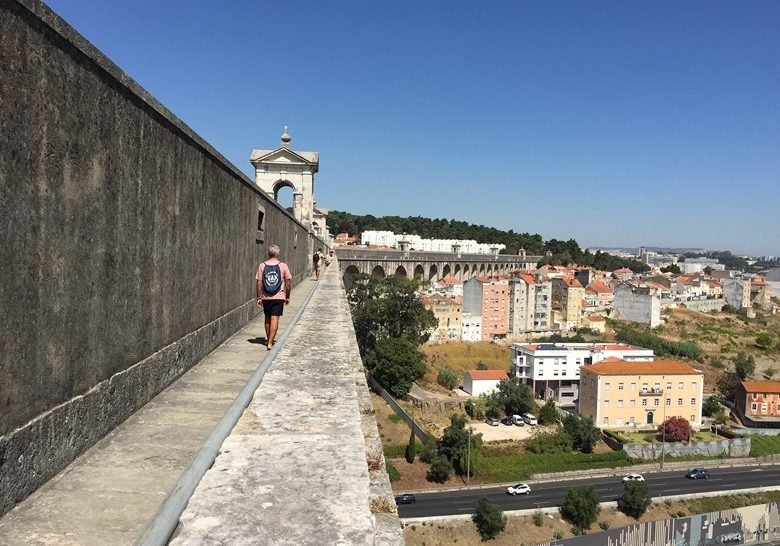
Claudio Carneiro: Let me put it this way, Lisbon’s medieval city was mostly destroyed by the 1755 earthquake. And the Aguas Livres Aqueduct, built to bring water from nearby Sintra, 14 km away, survived the cataclysm, just after being finished, in 1748. Miraculously it was one of the few great buildings that didn’t collapse.
It is the biggest, if not the widest Lisbon monument in sight. And probably, the oldest. And having the privilege to walk on this historical site is an amazing experience. It’s a huge architectural piece of history, which is the exact same way it was almost 300 years before.
We get to see the views from both sides, since it has two paths that connect in the middle. And down bellow we get to see these very picturesque small neighborhoods, really very different from the rest of the city. You get a great view over the Alcantara valley, with Lisbon on one side and Monsanto forest and the “25 de Abril” bridge on the other. The walkable part of the aqueduct connects Amoreiras to Monsanto forest. Unfortunately the Monsanto exit is normally closed. Otherwise, it would be another great shortcut, as is the Green Corridor.
São Domingos Church – The Naked Church
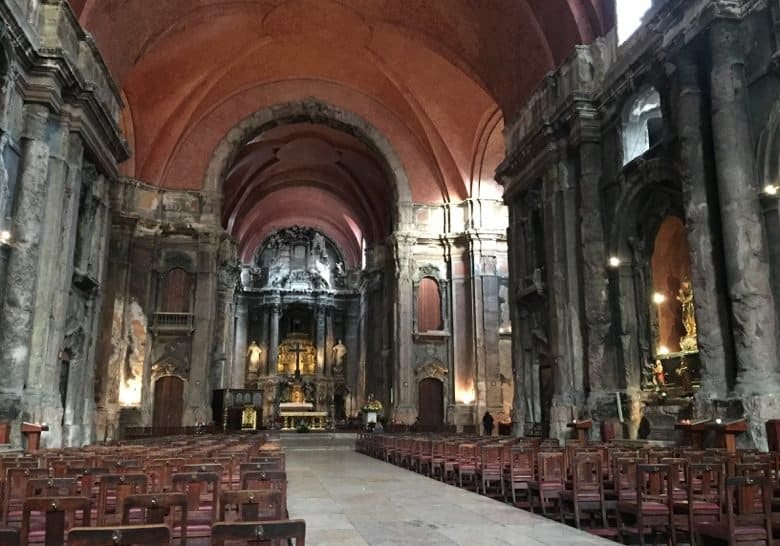
Claudio Carneiro: Nothing can be compared to the feeling I had the first time I went into Sao Domingos Church. I felt like I was out-of-place, out-of-time, but at the same time I felt in the right place and timeless.
This church is different from the others due to the fact that it suffered a huge fire in 1954, where all the interior ornaments and tapestry were completely burned down. What was left was only the naked colourful marble on the walls and the unrecognizable marble statues.
In a very strange resolution, the church was never reconstructed entirely, so it shows all its opened bruises with such an honesty that surprises us completely. They only painted the ceiling in a pastel color, kind of orange, which reminds even more of a Greek or Italian classical temple.
Fonte Luminosa – Light, water and magic
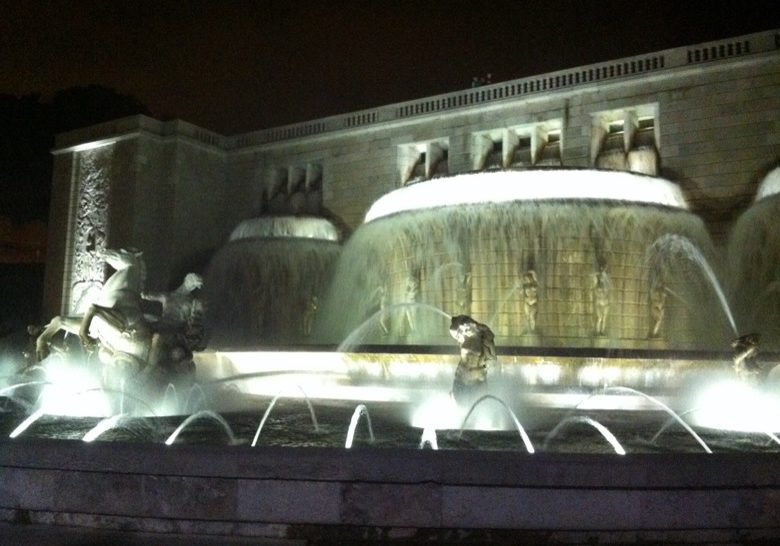
Claudio Carneiro: Lisbon must undoubtedly be one of the cities that most abounds in impressive spots that are often missing from the main tourist guides.
One of them is the Fonte Luminosa. I have been to the gorgeous luminous fountain in Barcelona, and the beautiful and crowded Fontana di Trevi in Rome. Well, Lisbon’s luminous fountain is a merge of the two, with the difference that it’s often far from being crowded and surely you will be able to claim this fountain all to yourself for quite some time.
There are normally just locals, children playing along the grass, people walking their dogs, couples dating, since it’s a very romantic spot, and all that just adds to the atmosphere. All different point of views and wonderful spots to enjoy the play of lights and water, and also a view of the city from above. I haven’t mentioned it yet, but this also a great viewpoint. There is the possibility of visiting the interior, on Saturdays, from 15:00 to 17:00.
